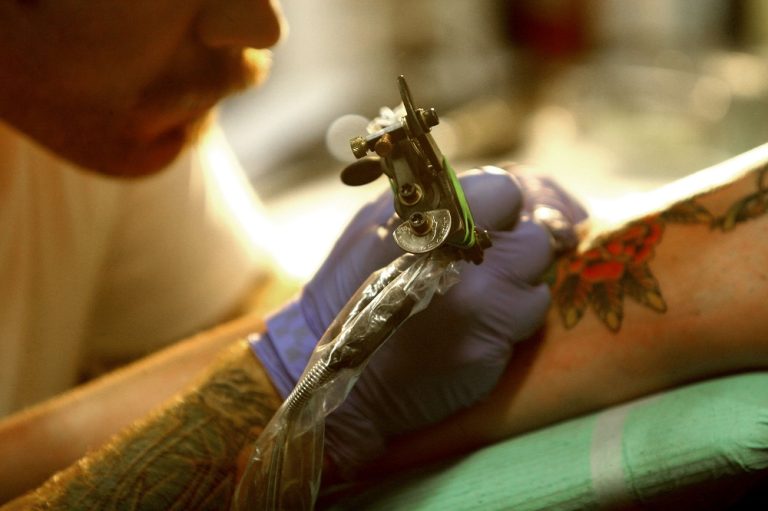However, when the same models were trained on Facebook language from Black participants, they performed poorly when tested on the Black participants, and showed only slightly better performance when tested on white participants. Unlike Narcan for opioids, like fentanyl, there are no counteragents to reverse an overdose of xylazine in a person’s system. Deming fears that if the DEA moves to classify xylazine as a controlled substance, her ability to treat animals outside of the walls of her practice will be hindered. A family medicine doctor in Nashville, Eyo is a current addiction medicine fellow at Vanderbilt’s Division of Infectious Diseases. He is the local expert and one of the leading researchers exploring the impacts of xylazine as an emerging illicit substance. Today, the misuse of the sedative is reflected in the rising rate of its traces found in connection with overdose deaths.
- In addition, xylazine is rapidly removed from the body (half-life of 23 to 50 minutes), which may make detection even more difficult.
- It often leaves users with severe skin ulcers, soft-tissue wounds, and necrosis, or premature skin death.
- The FDA has vowed to crack down on imports of the drug, and a new bill in Congress would add xylazine to the DEA’s list of controlled substances.
- Xylazine is structurally similar to a class of drugs known as phenothiazines.
Similar to clonidine, it acts as an agonist at central alpha-2-adrenergic receptors in the brain. This causes a rapid decrease in the release of the neurotransmitters norepinephrine and dopamine. As the U.S. opioid crisis continues, there’s a new lethal drug on the streets you’ll need to watch out for. If you or someone you know is in crisis and needs immediate help, call the 988 Suicide & Crisis Lifeline at 988. Learn more about suicide prevention and ways you can help someone who might be at risk for self-harm. Future studies will need to examine differences across other races and demographic features, using various social media platforms, the authors say.
An animal tranquilizer is making street drugs even more dangerous
In November 2022, the FDA released a Letter to Stakeholders and a Drug Alert to healthcare providers about the risk of xylazine exposure in humans. Xylazine use causes blood vessel narrowing, which leads to decreased blood flow to the skin in areas where xylazine was injected. This can result in the formation of necrotic wounds, which are wounds with dead tissue, that can easily get infected due to poor circulation.
Medical Professionals
Considering the increasing prevalence of its illicit emergence only within the last few years, Eyo shared the challenge in gathering human data and that spreading awareness is pertinent. “Most people don’t even know it’s in the supply they are using,” Dr. Eno Eyo said. The DEA alert states the Mexican Sinaloa Cartel and Jalisco Cartel’s chemicals, which are mainly sourced from China, are primarily responsible for most of the fentanyl trafficked in the U.S. The recent White House announcement said that while forensic lab identifications of xylazine have risen across the country in recent years, it has been identified most notably in the south and west regions of the US. These open wounds may lead to necrosis, or dead tissue, and eventually amputation of affected limbs, she said. Xylazine is not approved by the Food and Drug Administration for human use.
The Drug Enforcement Administration warned it had found xylazine in nearly a quarter of the fentanyl powder it seized in 2022, and in April, federal officials labeled it an “emerging threat.” When responding to an overdose, administering naloxone and giving “rescue breaths” can reverse the effects of fentanyl in a person’s system. If xylazine is alcohol use disorder symptoms and causes also involved, the naloxone may keep the person alive by resuming their breathing, but they may remain sedated and unconscious. The White House on Wednesday designated fentanyl laced with an animal tranquilizer called xylazine as an “emerging threat,” a designation that requires the government to coordinate a national response within 90 days.
Pharmacokinetics in humans
Regardless of inhalation, intravenous injection or intramuscular injection, those who ingest xylazine are at an acute risk of developing severe, rare skin diseases. “That will be our next effort to do the legwork on (comprehensive testing strips). I’ll check in with all of my local folks and service providers to make sure that’s the best thing to do,” Billings said. When people are testing for the presence of fentanyl, for example, they’re more likely to use less if the strip tests positive. They’re also more likely to spread awareness of the dangers of fentanyl and the importance of testing before drug consumption. It was involved in 10% of all drug overdoses in Connecticut in 2020, and 19% of all drug overdoses in Maryland in the following year. Research suggests that tranq has been part of Puerto Rico’s illegal opioid scene since the early 2000s and made its way to Philadelphia shortly after.
Mixing these drugs with xylazine can increase the effects some people feel when taking them. Xylazine is an animal tranquilizer, not an opioid, but over the past few years state law enforcement has seen it mixed with opioids. Xylazine, also known as “tranq,” is a veterinary tranquilizer and central nervous system depressant that can cause slow breathing, amnesia and drowsiness—and is not approved for use in humans. One of the unique effects of xylazine in humans is the possibility of severe rotting skin ulcers that may develop far from the injection site.
Routine hospital drug testing does not detect xylazine, further complicating surveillance. Xylazine, commonly known as “tranq,” is a non-opioid sedative analgesic medication that’s largely mixed into (adulterated) and used as an additive with other opioid substances like heroin, fentanyl, and cocaine. Blending tranq helps to bulk up and boost or mimic the effects of these drugs. A safe and controlled sedative intended only for large animals like horses is becoming an increasingly popular adulterant to substances like fentanyl, prompting flesh-eating skin ulcerations in humans — earning it the apt slang term “zombie drug.” Although users do experience a temporary high from the drug akin to opioids, the side effects are really unpleasant.
Last week, the US Drug Enforcement Administration issued an alert about a “sharp increase in the trafficking of fentanyl mixed with xylazine”, saying it had seized xylazine and fentanyl mixtures in 48 out of 50 states. The FDA has vowed to crack down on imports of the drug, and a new bill in Congress would add xylazine to the DEA’s list of controlled substances. DHS released xylazine testing strip instructions in both English and Spanish. According to the instructions, xylazine test strips should only be used with opioids, since the animal tranquilizer is most commonly mixed with fentanyl.
In the event of a suspected overdose, the National Institute of Drug Abuse still recommends giving naloxone because xylazine is frequently combined with opioids. As with all overdoses, the agency also urges calling emergency medical services. It has been found in multiple overdoses, but because it is combined with other substances like fentanyl or heroin, experts say it is hard to account for how responsible it was for those deaths. The Centers for Disease Control and Prevention found xylazine was detected in 9% of fatal overdoses involving illicit fentanyl from January 2021 through June 2022 in 31 states and the District of Columbia. In some states, around a quarter of those overdose deaths involved xylazine.
They will remove a sample of your affected skin tissue and test it under a microscope to see what’s causing it. They can also do wound cultures, which involves taking a swab can you smoke magic mushrooms of your wound to check for germs that might be causing the infection. If you notice these symptoms, call 911 or head to the nearest hospital for immediate medical attention.
On July 11, 2023, the White House released a National Response Plan to address the emerging threat of fentanyl mixed with xylazine. This page includes a list of additional state and local health department resources on xylazine. The White House announced Wednesday that a dangerous mixture of illicit drugs — the opioid fentanyl and the animal tranquilizer xylazine — pose an “emerging threat” in the US, making the ongoing drug overdose crisis even deadlier. But unlike opioids, neither Narcan nor naloxone can reverse the effects of a xylazine overdose, “making the deadliest drug threat our country has ever faced, fentanyl, even deadlier,” said Anne Milgram, administrator of U.S. The White House officially designated fentanyl adulterated with xylazine as an emerging threat to the U.S. on Apr. 12, 2023.








